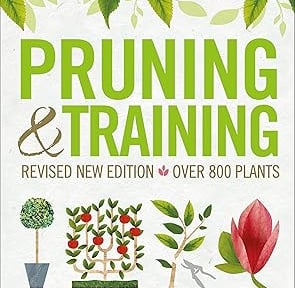Planting Trees: Setting Your Yard Up for Success
5 min read


The Importance of Planting Trees
Planting trees offers a multitude of benefits that extend beyond mere aesthetics. One of the most significant environmental advantages is the process of air purification. Trees act as natural filters, absorbing harmful pollutants such as carbon dioxide and releasing oxygen, which is essential for life. This natural process contributes significantly to improving air quality, making our environments healthier. Furthermore, trees play a critical role in carbon sequestration, effectively capturing carbon dioxide and reducing greenhouse gas levels in the atmosphere. This function is increasingly important in combating climate change.
Beyond their environmental contributions, trees also provide habitats for various wildlife species. By planting trees, we create vital ecosystems that support birds, insects, and other organisms, fostering biodiversity in our surroundings. This not only benefits the wildlife population but also enriches the community's connection with nature, promoting ecological balance.
In addition to their ecological significance, trees enhance the visual appeal of landscapes. A well-placed tree can act as a focal point in a garden, adding dimension and color to outdoor spaces. This aesthetic enhancement can increase property values, making homes with mature trees more desirable in the real estate market. Moreover, trees provide essential shade, which can mitigate the heat island effect in urban areas, lowering energy consumption by reducing the need for air conditioning.
Lastly, the mental well-being associated with greenery cannot be understated. Numerous studies have shown that interacting with green spaces improves mood, reduces stress, and promotes overall mental health. The presence of trees in communities contributes to a sense of tranquility and encourages outdoor activities. By considering the long-term impact of planting trees, individuals and communities can invest in climate resilience and sustainability, ensuring a healthier and more harmonious environment for future generations.
Choosing the Right Trees for Your Yard
When embarking on the journey of planting trees in your yard, the selection process is crucial for ensuring long-term success and satisfaction. The first step in choosing the right tree species involves understanding your local climate. Different tree varieties thrive under specific climatic conditions, such as temperature extremes, rainfall patterns, and sunlight exposure. Researching native species can be particularly beneficial as these trees are already adapted to the local environment and tend to require less maintenance.
The next critical consideration is the soil type in your yard. Conduct a soil test to determine its pH, drainage ability, and nutrient levels. Trees have varying soil preferences; while some may thrive in sandy soils with good drainage, others may prefer clay or loamy soils. This detail can significantly influence the health and growth rate of the trees you choose.
Additionally, understanding the mature size of the tree is essential. Consider not only the height but also the spread of the branches, which will affect nearby structures, power lines, and landscaping elements. Large trees may provide significant shade and aesthetic benefits, but they require ample space. Conversely, smaller trees may suit confined areas better while still offering beauty and ecological benefits.
Maintenance requirements should also factor into your decision-making. Some species may require regular pruning, pest control, or specific types of fertilizers. Be sure to assess how much time and resources you can commit to tree care before making your final selection. Lastly, consider the rewards you wish to reap; trees may bear fruit, produce flowers, or exhibit vibrant fall colors, enhancing your yard's character.
For sourcing healthy trees, visit reputable nurseries or local community tree programs where you can acquire well-cared-for specimens. Engaging with local gardening communities can also provide support and additional resources in your tree-planting journey.
Best Practices for Planting Trees
Successfully planting trees requires careful planning and execution. The first step is to choose the right time of year for planting, which typically falls in the early spring or late fall. These seasons provide mild temperatures and sufficient moisture for trees to establish their roots before the harsher conditions of summer or winter arise.
Once the timing is set, prepare the planting site. Clear away any grass, weeds, and debris from the area where the tree will be planted. This will help prevent competition for nutrients and water. Following this, it is crucial to dig the hole properly. The hole should be at least twice as wide as the root ball and slightly shallower than the root system, ensuring that the tree is positioned correctly without being too deep.
Proper spacing between trees is also essential for their growth and development. Each species has specific requirements, so research the mature width of the tree and ensure ample room for expansion. This consideration will prevent overcrowding and allow healthy air circulation.
After planting, watering the tree is vital. Trees need adequate moisture, especially during their first few years. Establish a watering schedule, providing deep irrigation to encourage the development of strong roots. In addition, applying mulch around the base of the tree can help retain moisture, suppress weeds, and enhance soil quality.
Soil amendments may also be beneficial. Incorporate organic materials such as compost to improve soil fertility and structure, creating an ideal environment for growth. However, avoid over-amending as it can lead to nutrient imbalances.
When planting trees, common mistakes should be avoided. These include planting too deep, using the wrong type of soil, and neglecting the watering needs post-planting. By following these best practices, trees will have a strong foundation for sustainable growth and development.
Caring for Your Trees at Every Stage
Proper care for trees is crucial at each stage of their growth, ensuring they thrive and remain healthy over time. Young saplings require a different set of care practices compared to established trees. Initially, newly planted trees need generous watering to establish strong root systems. It's typically recommended to water them deeply once a week, adjusting frequency based on weather conditions. This ensures the roots have sufficient moisture without being waterlogged, which can lead to root rot. During their first few years, it's also beneficial to apply a balanced fertilizer in early spring to stimulate growth and establish healthy foliage.
As trees mature, the focus shifts. Established trees generally need less frequent watering, often relying on deeper soil moisture. Nevertheless, during periods of drought, it is essential to provide water directly to the root zone. Fertilization should continue, but it typically becomes less intensive, especially if the trees are native and adapted to the soil in which they are planted. Conducting a soil test can help determine specific nutrient needs, guiding appropriate fertilization practices.
Pruning is another key aspect of tree care that varies with maturity. Young trees benefit from formative pruning to develop a strong structure and remove any competing branches. On the other hand, mature trees should be pruned selectively, focusing on dead or diseased branches to maintain health and prevent hazards. Seasonal care is fundamental; spring is the ideal time for pruning, while fall is an appropriate time for checking for pests and diseases. Implementing integrated pest management strategies, such as encouraging beneficial insects and inspecting for potential threats, will help safeguard trees from infestations.
By understanding these varying care requirements from saplings to mature trees, homeowners can set their yards up for success by nurturing their trees throughout their entire lifecycle.











